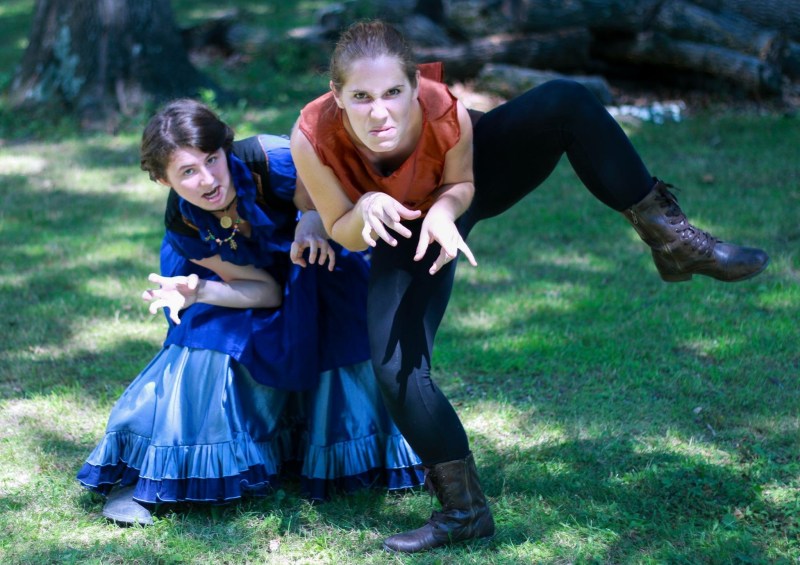Last September, I had a pretty hard time deciding what to pack and what to leave at home for my freshman year at Stanford. With an explosion of clothes, books and personal knick-knacks covering every square inch of my bedroom floor, I realized there were too many items on my list. Scanning the multiple pages, I crossed off the things I’d miss least: my first Build-a-Bear, several books whose names I can’t remember, a pair of red pumps that never fit. At the very bottom of the list was something that would require an entire suitcase, but I knew it had to come.
The funny thing is, I was embarrassed to bring this item or even take it out in the presence of my new roommate.
Stanford is a miniature melting pot of incredibly talented people. With Olympic athletes, genius musicians, and savvy entrepreneurs, it’s hard not to feel intimidated by the sheer level of expertise every student seems to possess in a particular field. What I failed to recognize upon meeting my peers for the first time was the multi-faceted nature of the average student. Although no Stanford student is average by any definition, there are talents and interests beyond those advertised. Even in the spring quarter of my freshman year, I’m still surprised when I hear a friend of mine can speak eight languages or won a statewide poetry competition.

Over the past few months, I’ve thought about this phenomenon. Who are these people I live and interact with on a daily basis, really? Why don’t they share their interests? Is it embarrassment or a fear of not being accepted? Am I just not paying enough attention?
Jack Coolbaugh ‘17 has witnessed an interesting trend both as a senior and an RA: “I definitely see a hesitance in students about sharing their talents, particularly in their freshman year. I think it takes everyone some time to be comfortable sharing their talents fully. There is an initial pressure to be more humble or almost secretive about one’s abilities until they find a space where those abilities are appreciated.”
Fortunately, freshman Cole Winstanley ‘20 has found Stanford to be a place where his intense love of birds is something he can share with close friends without hesitation.
“I definitely feel like people at Stanford are more open-minded. In high school, I was definitely more embarrassed about being a birder, but now I think people see it more as something that makes me an interesting person,” he said.
Originally from Massachusetts, Cole’s hometown is the birthplace of Henry David Thoreau’s conservationist movement in the mid-nineteenth century. It’s not surprising he became interested in photographing birds at a young age. However, not all people are as excited about capturing fowl on camera as he is.
“Usually reactions at Stanford fall into two categories: Some people say something to the effect of ‘Oh cool, I also know person X who does that, too’ and others react with confusion like, ‘You just walk around looking at sparrows? I don’t think I could enjoy that,’” Cole added.
Like Cole, freshman Maya Ziv ‘20 has experienced a range of reactions to her own interest of Live Action Role-Playing or LARPing, for short. In general, LARPing is the acting out of different characters in a fictional world for enjoyment. Players interact with each other completely in character. Props and costumes are also utilized for a realistic effect.
“It’s a huge part of my life. A ton of my time is spent either writing games or planning LARP events. A lot of people are very curious about the mechanics and how it actually works, so those questions generally come up. People often relate it to their experience with fantasy or games, [specifically] their favorite video game or novel. Occasionally, people will be weirded out or confused, but most respond [with positivity],” she said.

The discrepancy in reactions could be at the root of the lack of urgency to share unique interests or talents. Even at a university as liberal and accepting as Stanford, there are still skills that are considered more interesting than others, so students may wonder if they’re even worth sharing. There’s also the possibility of humility playing a role in the hesitancy to advertise these exceptional passions.
As an RA, junior Meena Chetty ‘18 agreed, “I do think that sometimes students hesitate to share their talents out of modesty or because they don’t realize their talents are talents in the first place.”
When I reached out to a mutual friend to get freshman Syler Peralta-Ramos’s ‘20 contact information, I was told he is a highly talented nature photographer but extremely humble. With a professional website exhibiting his award-winning and published works, I was surprised but understood why Syler chooses not to talk too much about his amazing hobby.
“I would say that most people [who know me are aware of] my interest in photography. It is such a huge part of who I am [and] comes up eventually in conversation. I also share my photography on Facebook and Instagram, so some people find out about it that way. That being said, I don’t like to talk too much about my photography with my peers at Stanford because everyone at Stanford has such incredible and unique talents, and I love hearing about the perspectives and passions of my peers much more than I enjoy talking about my own,” he said.
Both the quality of humility and fear of negative reactions were factors in my deciding to open the suitcase. An even more powerful influence was the existence of stereotypes. Although I am proud of my talent, I have grown tired of others making immediate assumptions of what I do. I was afraid that I wouldn’t be able to break the stereotype at Stanford, but ultimately I decided to give it a chance.

I am a crocheter. My craft is similar to knitting, but my tool is a curved hook instead of two pointed needles. Crochet is typically associated with elderly women and a collection of cats, which isn’t horrible, but I am so much more than that image. I’ve created a multitude of items from afghans to scarves to amigurumi over the past twelve years. I am currently trying to break the Guinness World Record for fastest crocheter, and I’m almost positive Granny can’t move her hands that fast.
In my suitcase, I had 63 skeins of yarn, all different textures and colors. Each one is unique, appealing, and versatile like every Stanford student’s hidden passion. When I decide to create a seemingly unaesthetic palate for a project, I always try it out for the sake of surprise. Like picking a ball of yarn, sometimes it just takes a bit of courage to share a talent. The result is always beautiful to someone.
Contact Emily Schmidt at egs1997 ‘at’ stanford.edu.
